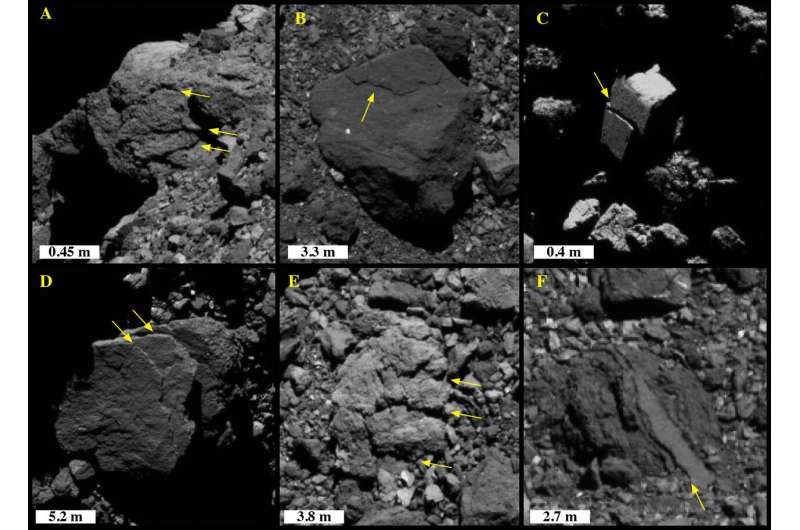October 28, 2020 report
Studying craters on asteroid Bennu shows how long it has been orbiting near Earth

A team of researchers affiliated with a host of institutions in the U.S., Canada and Italy has found that studying the craters on asteroid Bennu allowed them to calculate how long it has been orbiting near Earth. In their paper published in the journal Nature, the group describes their study of craters formed on boulders on the asteroid.
Asteroid Bennu has made headlines lately. It is the asteroid that the OSIRIS-REx spacecraft touched down on recently, collecting samples. That mission marked the first time that NASA has landed and collected samples from an asteroid. In this new effort, the researchers have been using data from the OSIRIS-REx spacecraft to calculate how long the asteroid has been orbiting near Earth.
To learn more about the age of the asteroid and its time spent orbiting near the Earth, the researchers focused their efforts on craters in boulders on the surface of the asteroid. Prior research has suggested that Bennu was once part of a larger body and was knocked off by a collision with another object while orbiting in the circumstellar disc, an asteroid belt located between Mars and Jupiter.
After the collision, researchers believe Bennu slowly made its way out of the asteroid belt. During that time, it was struck by other objects, some of which hit boulders on its surface, resulting in large craters. After it made its way out of the asteroid belt, Bennu continued to be hit by other smaller objects, some of which also struck boulders on its surface, but the researchers with this new effort believe those newer strikes resulted in smaller impact craters. And because Bennu moved into a near-Earth orbit, those smaller craters represent the timeline of its move to the new orbit. By studying the size and depth of those craters using data from OSIRIS-Rex, the researchers were able to estimate their age—approximately 1.75 million years—which also shows how long Bennu has been in a near-Earth orbit.
More information: R.-L. Ballouz et al. Bennu's near-Earth lifetime of 1.75 million years inferred from craters on its boulders, Nature (2020). DOI: 10.1038/s41586-020-2846-z
Journal information: Nature
© 2020 Science X Network





















